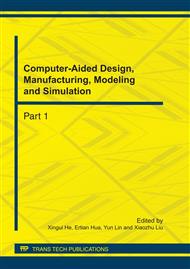p.346
p.350
p.355
p.360
p.365
p.373
p.379
p.386
p.395
Improved Hilbert-Huang Transform Applied in Power Quality Detection in Ship Power System
Abstract:
In this paper, Hilbert-Huang Transform (HHT) and its improved method is introduced for detection and analysis of power quality in ship power system for the first time. This method is applied in detecting surge current and voltage interruption etc. of the ship power grid. Beginning-ending time, time-frequency, time-amplitude of the disturbance signal can be obtained accurately with HHT method. Mode mixing occurs when using empirical mode decomposition (EMD) to analyze harmonics, and consequently, all single harmonic components cannot be effectively decomposed. The improved HHT method based on Fourier transform is used to solve the problem in this paper. Complicated Harmonic can be decomposed into single harmonic component, and time-amplitude and time -frequency of harmonics can be obtained accurately by the improved method. In MATLAB/Simulink platform, harmonic source model of ship power system is established. Simulation results show that the improved method has better performance in Harmonics analysis than wavelet packet analysis.
Info:
Periodical:
Pages:
365-372
Citation:
Online since:
August 2011
Authors:
Price:
Сopyright:
© 2011 Trans Tech Publications Ltd. All Rights Reserved
Share:
Citation:


